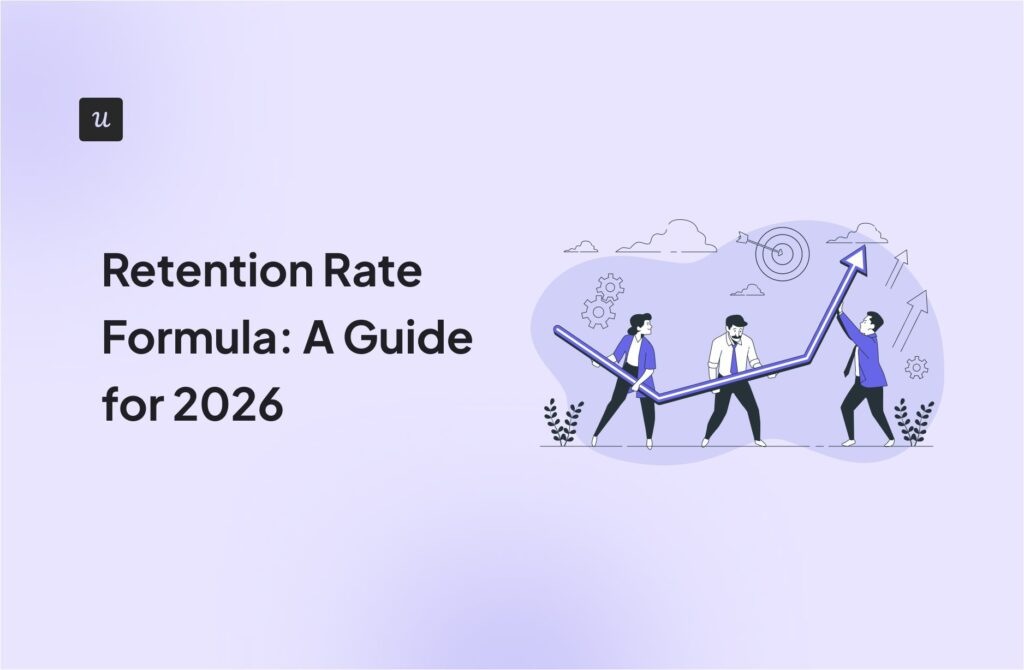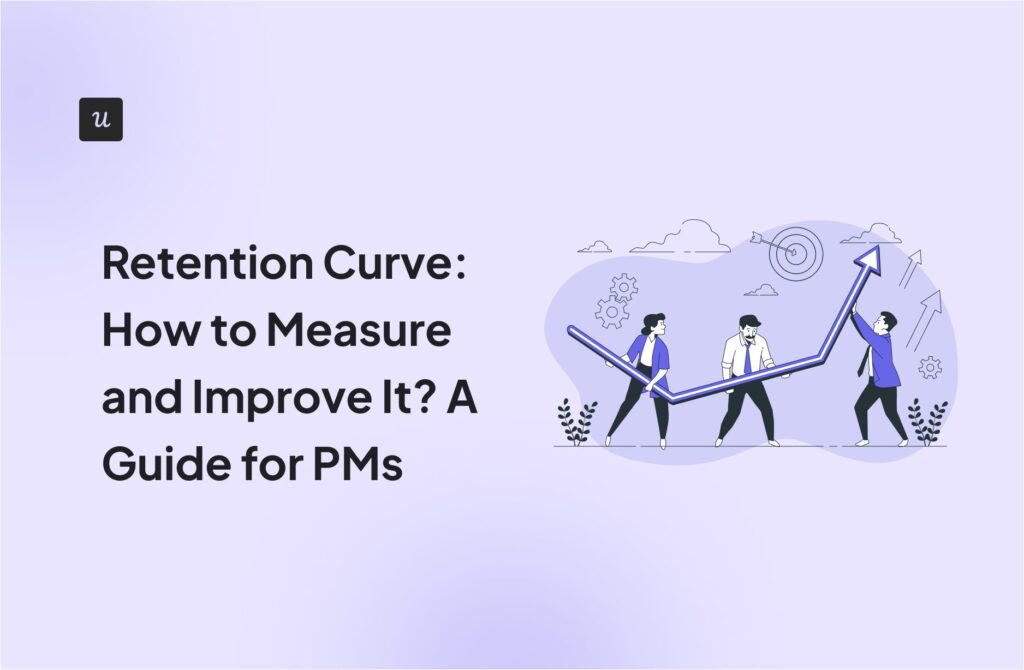
What is a SaaS marketing funnel, and how do you create one for your business?
This article breaks down what you need to know to get started. We covered actionable steps to build an effective system that converts users, drives product engagement, and leads to long-term growth.
Try Userpilot Now
See Why 1,000+ Teams Choose Userpilot

What is a SaaS marketing funnel?
A SaaS marketing funnel outlines the steps users take from their initial awareness of your product to becoming paying, loyal users.
Unlike traditional funnels, the SaaS marketing funnel is a cyclical process aimed at acquiring customers and retaining them, expanding their usage, and turning them into advocates.
For instance, a brick-and-mortar brand might not pay so much attention to customer retention, but SaaS companies operate a recurring revenue model that depends on continuous subscription renewals to offset customer acquisition costs and ensure profitability.
SaaS marketing funnel vs. SaaS sales funnel
While marketing and sales efforts are often combined to achieve the same objective (customer acquisition), they each focus on slightly different customer journey stages. Here’s an overview of the key difference between both funnels:
- SaaS marketing funnels are designed to attract and educate potential customers. They focus on creating awareness and interest through content marketing, social media, and other channels. Sales funnels pay more attention to nurturing qualified leads and closing deals.
- Marketing fuels sales. For example, SEO-optimized content crafted by the marketing team can attract prospects to your website and convince them to book a demo call with the sales team.
- The marketing funnel is generally a long-term strategy. It involves building customer relationships over time, nurturing their interest, and fostering loyalty. SaaS sales funnels are typically shorter-term. They focus on moving qualified leads through the sales process as efficiently as possible to generate revenue growth.
5 Stages of a SaaS marketing funnel
Several models exist for understanding the customer journey and how prospects become paying customers—e.g., RACE, AIDA, TOFU-MOFU-BOFU—but the AARRR framework or pirate metrics tend to be particularly effective for SaaS businesses.
This is because it covers the entire customer lifecycle, ensures you don’t miss any important touchpoints, and aligns well with the product-led growth model often used in SaaS.
AARRR stands for Acquisition, Activation, Retention, Referral, and Revenue. Let’s explore each of these pirate metrics and how to maximize them to drive sustainable growth for your SaaS business.
Stage 1: Acquisition
The acquisition stage is where you attract potential customers to your business. It involves using various marketing and outreach strategies to generate awareness and drive significant volumes of qualified traffic to your website, app, or landing page.
Metrics to measure
- Website traffic: Number of visitors to your website or landing page.
- Channel-specific traffic: Traffic from different sources like social media, product-led SEO, or paid ads.
- Engagement: The level of interaction users have with your marketing content. This includes time spent on a website or landing page, the number of pages viewed, social media likes, comments, and shares.
- Trial sign-ups: The number of people who sign up for a free trial of your product.
Examples of acquisition tactics
Common customer acquisition tactics include social media campaigns, content marketing, SEO, webinars, paid advertising, and PR efforts.
Example: Userpilot hosts regular webinars to attract and educate potential customers:

Catch up on Userpilot’s on-demand webinars.
Stage 2: Activation
Once you’ve captured interest, the activation stage is where visitors take the desired action to become active users. This could involve signing up, creating an account, starting a free trial, or completing a tutorial.
Your objective here is simple: build a smooth and engaging onboarding experience that showcases your product’s value prop, shortens the time to value, and leaves a positive first impression.
Metrics to measure
- Activation rate: The percentage of users who achieve a key action that signifies they have experienced initial value from your product (e.g., creating their first design if you’re a UX design tool).
- Time to value: How long it takes for a new user to experience your product’s core value or benefit.
- Onboarding completion rate: The percentage of new users who complete the entire onboarding process.

Examples of activation tactics
A few things you can implement at this stage of the SaaS marketing funnel:
- Personalized onboarding: Tailor the initial user experience based on their use case, job roles, or any relevant data you have on them. This will shorten the time to value and help them adopt your tool faster.
- Product demos: Showcase your product’s capabilities through live or recorded demos. Use this as a medium to highlight key features, benefits, and use cases to entice potential customers and educate existing users.
- In-app messages: Use contextual messaging to offer tips and tricks or solicit feedback. For example, Attention Insight leveraged Userpilot to create onboarding checklists, interactive walkthroughs, and other forms of in-app guidance to help new users understand the platform.

Offering contextual guides helped Attention Insight boost user activation by 47% in a short time—a growth that positively impacted the company’s bottom line.

Stage 3: Retention
This third stage is where you keep users engaged and coming back for more. To drive customer retention, you need to gain a deep understanding of customer needs and create seamless in-app experiences that make your product sticky.
Metrics to measure
- Churn rate: Percentage of customers who stop using your product or service over a specific period.
- CSAT score: A measure of how satisfied customers are with your product, service, or specific interactions.
- Retention rate: Percentage of users who continue using your product over a specific period.
- Daily/Weekly/Monthly active users (DAU/WAU/MAU): Number of users who engage with your product within a specific time frame.
- Customer lifetime value: Average revenue a customer generates over their lifetime.

Examples of customer retention tactics
Do the following to improve your SaaS marketing funnel and boost customer retention:
- Feature updates and improvements: Continuously introduce new features and enhancements to demonstrate your commitment to meeting customer needs. Actively listening to your users and understanding their pain points is key to delivering meaningful updates that resonate with them. As Meagan Glenn, Senior Program Manager at Lavender, aptly puts it:

- Identify drop-offs: Implement funnel and user path analysis to understand where users tend to disengage.

After spotting drop-off points, it’s time to dig further to understand why. Sometimes, the issue is super obvious, but at other times, you may need to contact users directly to survey them about their frustration.
Many SaaS companies get stuck at this stage due to a lack of granular user insights. For example, Cuvama faced this challenge when using Pendo for user onboarding, as the platform made it difficult to gain the deep understanding of user behavior they needed.
Then, they switched to Userpilot. In addition to using our platform to intuitively build onboarding flows and an in-app resource center to assist users, Cuvama utilized Userpilot’s user profile feature to identify specific users who needed help. This made it easier to eliminate friction, improve the user experience, and boost overall retention.

- Follow up with high-value customers: Userpilot’s user profile feature lets you segment users and track their individual experiences with your product. You can monitor survey responses, most used features, frequency of use, completed events, and so on. Armed with this information, you can easily reach out to your power users when you notice a shift in sentiment or declining usage. This will allow you to address any underlying issues and proactively prevent churn.

Stage 4: Revenue
Once customers have been using your product for a while and show signs of satisfaction with their experiences, it’s time to help them discover more value. You can achieve this through upsells, cross-sells, and add-ons.
Upselling involves encouraging customers to purchase a higher-tier plan or additional features, while cross-selling suggests complementary products or services. By focusing on these strategies, you can increase the overall revenue per customer and maximize the lifetime value of your customer base.
Metrics to measure
- Average revenue per user: The average amount of revenue your SaaS business generates per user within a specific period (e.g., monthly or annually).
- Expansion revenue: Additional revenue from existing customers through upsells, cross-sells, add-ons, or upgrades.
- Monthly recurring revenue: Predictable, recurring revenue generated from subscriptions or other recurring payments on a monthly basis.
- Net revenue retention: Percentage of recurring revenue retained from existing users over a given period, taking into account upgrades, downgrades, and churn.
- Conversion rate: In the revenue stage, the conversion rate measures the percentage of users who take a specific revenue-generating action, such as making a purchase, upgrading to a premium plan, or renewing a subscription.
- Revenue growth: The rate at which your revenue increases over time.

Examples of revenue growth tactics
Try the following expansion strategies:
- Contextual upsells: Strategically place upsell prompts at various touchpoints throughout the customer journey. Tailor your offerings to the specific context and user behavior to make them more relevant and appealing. For example, you could offer an upsell to a higher-tier plan when a user reaches their usage limit on a free plan or suggest complementary products based on their subscription history.
- A/B test your prompts: Experiment with different messaging, content formats, offerings, prices, and other relevant elements to find what converts better. For instance, you could A/B test a micro-video versus a gif in your upsell prompt and see what resonates more with users.
- Exclusive offers: Encourage account expansion by offering exclusive incentives to existing customers. For example, you could allow power users to try premium features for free for a limited time. This will enable them to experience the added value firsthand, increasing the likelihood they’ll upgrade to access those features permanently.

Stage 5: Referral
In this final stage, the focus is on encouraging happy customers to spread the word about your product organically.
You can achieve this through referral programs, incentivized sharing, or simply by creating a product so exceptional that users naturally recommend it to their network.
Metrics to measure
- NPS: A figure that represents customer satisfaction and loyalty obtained by asking customers how likely they are to recommend your product to others on a scale of 0 to 10.
- Product rating: Your product’s average rating on review platforms such as G2, Capterra, or Trustpilot.
- Referral rate: The percentage of existing customers who refer new users to your product.

Example of referral tactics
Segment NPS promoters and trigger contextual follow-up messages asking them to leave you a review or invite someone to your product.
To make it effective, you can provide incentives like product discounts, a few months of free access to your premium tool, or any other reward your audience will love.

Conclusion
There you have it! You should now be able to build your marketing funnel and know how to measure success at each stage.
As you begin, remember that your funnel is only as good as your understanding of customer needs and behaviors, so dedicate ample learning about your audience as much as possible.
Ready to get started? Get a Userpilot Demo now and see how a product growth tool can help you build a SaaS marketing funnel that works.







